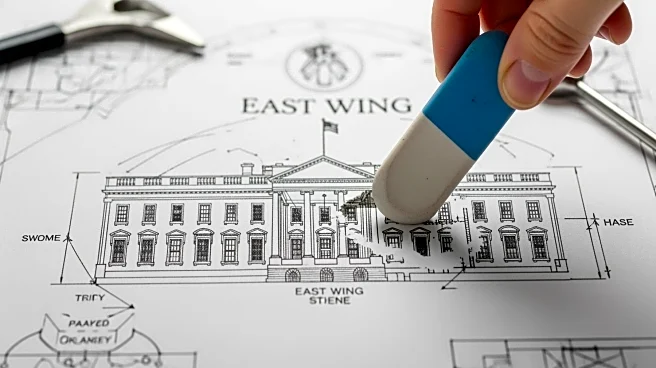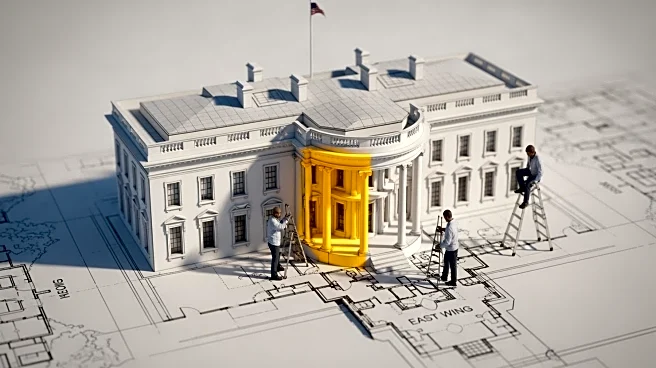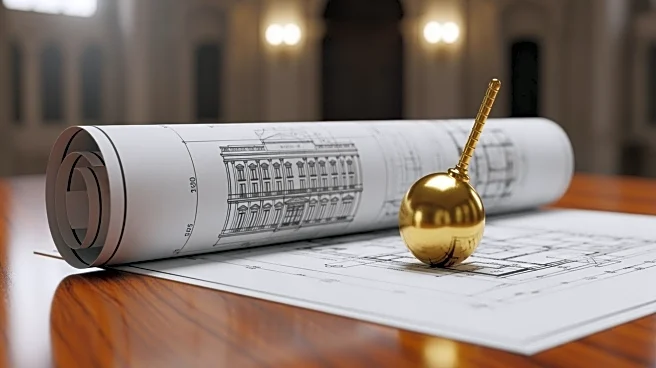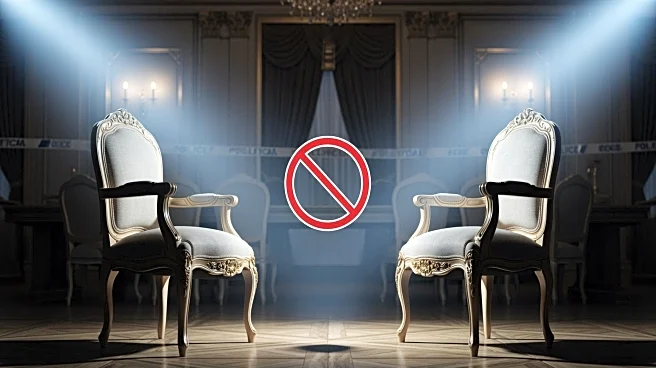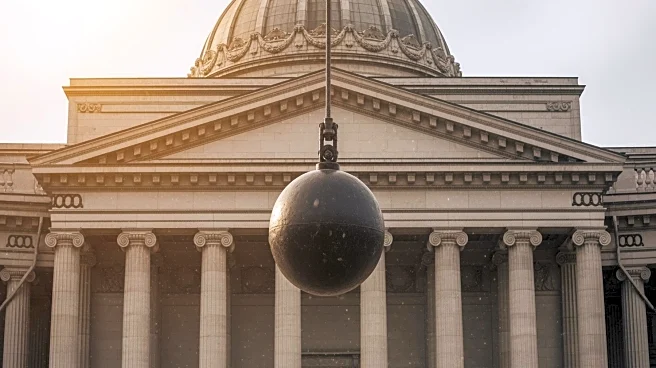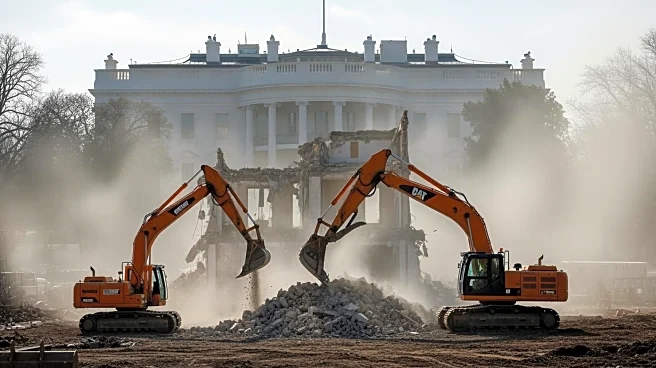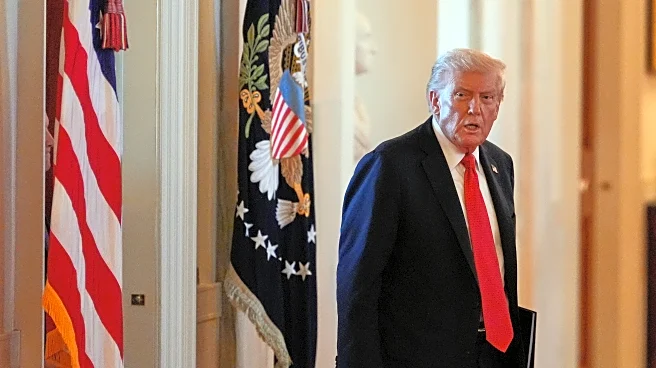What's Happening?
The White House has commenced the demolition of part of the East Wing to construct a new ballroom, a project championed by President Trump. The demolition began on October 21, 2025, despite the absence
of approval from the National Capital Planning Commission, which typically oversees such projects. The East Wing, traditionally housing the First Lady's offices, will undergo modernization and renovation during the construction. The ballroom, estimated to cost $250 million, is being funded privately, with contributions from various donors, including President Trump himself. The project aims to create a 90,000-square-foot space capable of accommodating 999 people, marking the most significant structural change to the White House since the Truman Balcony addition in 1948.
Why It's Important?
The construction of the ballroom represents a significant alteration to a historic U.S. landmark, raising concerns among architectural historians and professionals about the preservation of the White House's historical integrity. The project underscores the ongoing debate between modernization and historical preservation in government buildings. The ballroom's construction, funded privately, also highlights the influence of private donors in public projects, potentially setting a precedent for future renovations. The project could impact the White House's functionality, providing a larger venue for hosting dignitaries and events, which President Trump argues is necessary due to the limitations of the existing East Room.
What's Next?
As the demolition progresses, the White House will need to address the concerns raised by architectural groups and ensure compliance with federal regulations. The National Capital Planning Commission's role in the approval process remains uncertain, and the White House has yet to disclose the full list of donors contributing to the project. The construction is expected to continue, with the ballroom slated for completion before the end of President Trump's term in January 2029. The project may face further scrutiny from preservationists and political opponents, potentially influencing future policy on federal building renovations.
